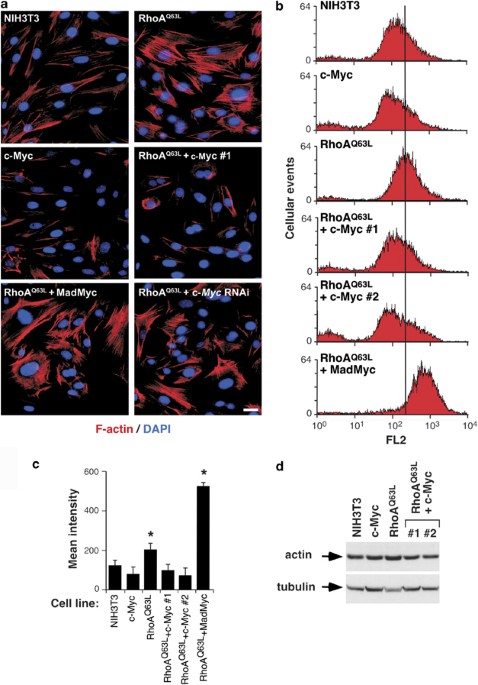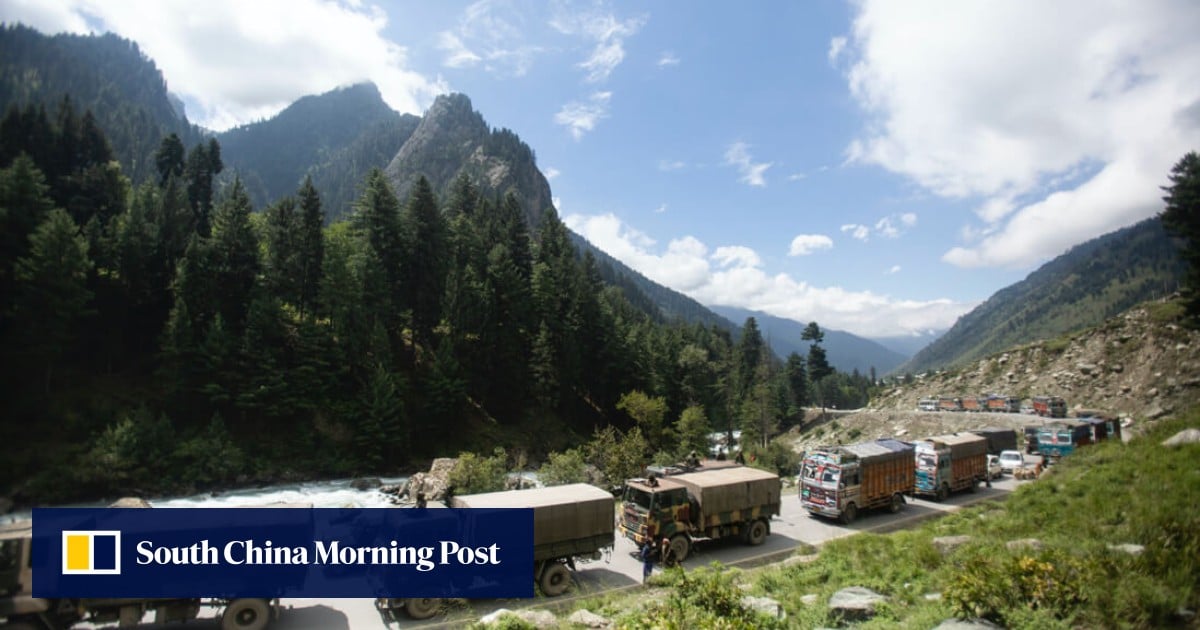
- Select a language for the TTS:
- UK English Female
- UK English Male
- US English Female
- US English Male
- Australian Female
- Australian Male
- Language selected: (auto detect) - EN
Play all audios:
The GTPase RhoA participates in a number of cellular processes, including cytoskeletal organization, mitogenesis and tumorigenesis. We have previously shown that the transforming activity of
an oncogenic version of RhoA (Q63L mutant) was highly dependent on the transcriptional factor c-Myc. In contrast to these positive effects in the RhoA route, we show here that c-Myc affects
negatively the F-actin cytoskeleton induced by RhoAQ63L and its downstream effector, the serine/threonine kinase Rock. This effect entails the activation of a transcriptional program that
requires synergistic interactions with RhoA-derived signals and that includes the upregulation of the GTPase Cdc42 and its downstream element Pak1 as well as the repression of specific
integrin subunits. The negative effects of c-Myc in the F-actin cytoskeleton are eliminated by the establishment of cell-to-cell contacts, an effect associated with the rescue of Pak1 and
integrin levels at the post-transcriptional and transcriptional levels, respectively. These results reveal the presence of a hitherto unknown signaling feed-back loop between RhoA and c--Myc
oncogenes that can contribute to maintain fluid cytoskeletal dynamics in cancer cells.
We thank M Blázquez for technical help. XRB work is supported by grants from the NIH (5R01CA73735), the Spanish Ministry of Science and Innovation (SAF2006-01789, GEN2003-20239-C06-01), the
Red Temática de Investigación Cooperativa en Cáncer (RD06/0020/0001), the Castilla y León Autonomous Government (GR97), and the 7th Framework European Union Program
(FP7-HEALTH-2007-A-201862).
Present address: 4Current address: Institute of Cancer, Barts and the London School of Medicine and Dentistry, Charterhouse Square, London, EC1M 6BQ, UK.,
V Sauzeau and I M Berenjeno: These authors contributed equally to this work.
Centro de Investigación del Cáncer, CSIC-University of Salamanca, Campus Unamuno, Salamanca, Spain
Instituto de Biología Molecular y Celular del Cáncer (IBMCC), CSIC-University of Salamanca, Campus Unamuno, Salamanca, Spain
Supplementary Information accompanies the paper on the Oncogene website
Anyone you share the following link with will be able to read this content:





